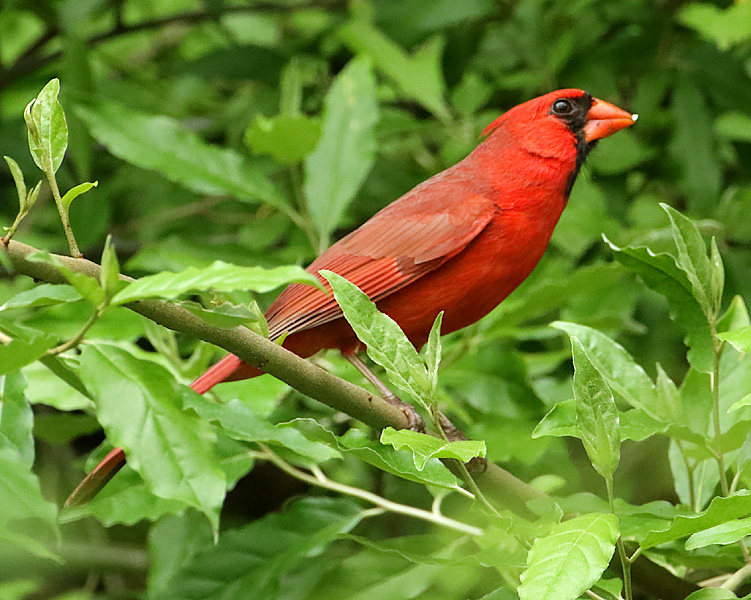
Northern Cardinal
It was very foggy this morning, but the Birdcast avian radar showed good migration through Virginia overnight, and I wanted to see if any new warbler species might be seen. When I got to Rockfish Gap, the entire Blue Ridge was engulfed in fog and clouds, so I continued on to Ridgeview Park in Waynesboro. I arrived there at 10:30, and after an hour had 22 avian species. The only warbler at Ridgeview Park was a heard only Common Yellowthroat. The highlights were a Yellow-throated Vireo and a Cooper's Hawk, but the hawk's thin legs makes me think that it might have been a Sharp-shinned Hawk. It's gray nape is more like that of a Cooper's.

Northern Cardinal
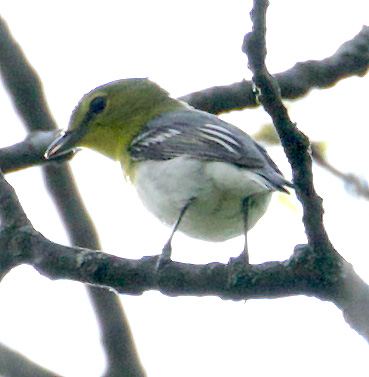
Yellow-throated Vireo
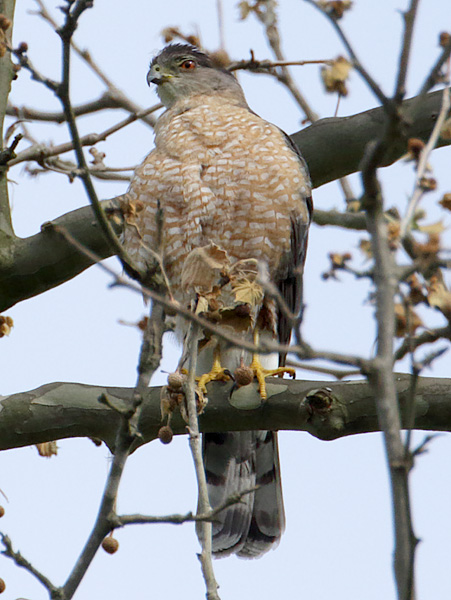
Cooper's Hawk
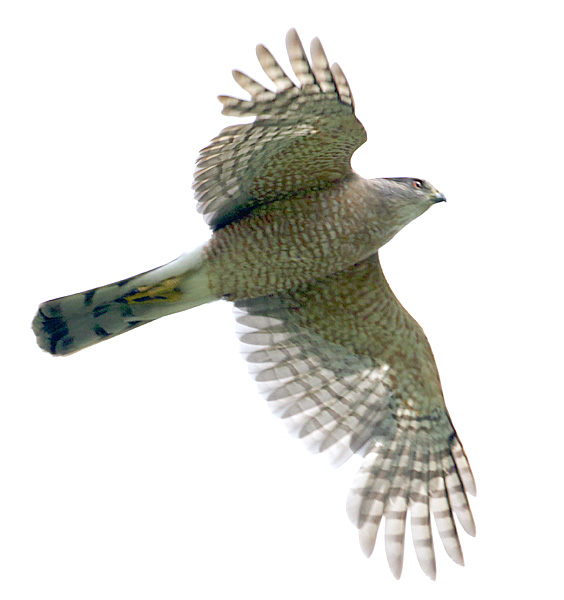
Cooper's Hawk
I then went up on the Blue Ridge Parkway. I added 15 more avian species between 10:30 and 12:30, including 9 more warbler species. Some sections of the first 13 miles of the parkway were in dense fog, while other sections were in bright sunlight. I was lucky that stops at my two favorite warbler sites were in sunlight. At the north (lower) end of the cirque (mm. 7.5), I heard Cerulean Warblers, so I started looking. At first, I found a first spring male Cerulean Warbler - note the white supercillium (eyebrow) and some retained juvenile brown feathers.
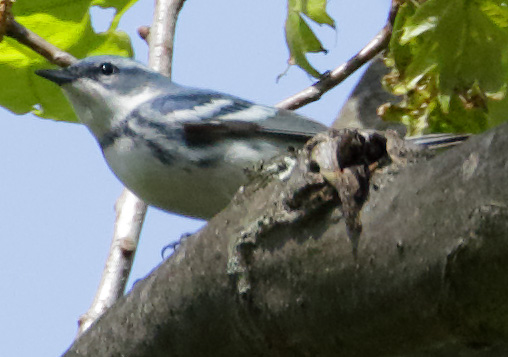
Cerulean Warbler
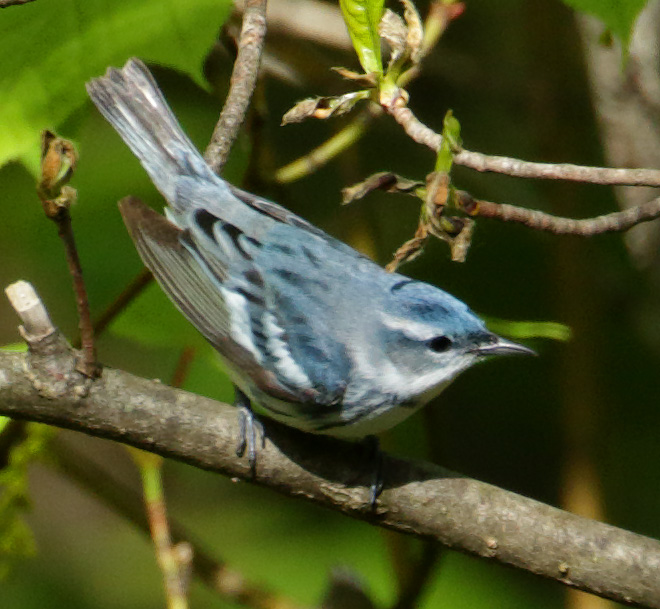
Cerulean Warbler
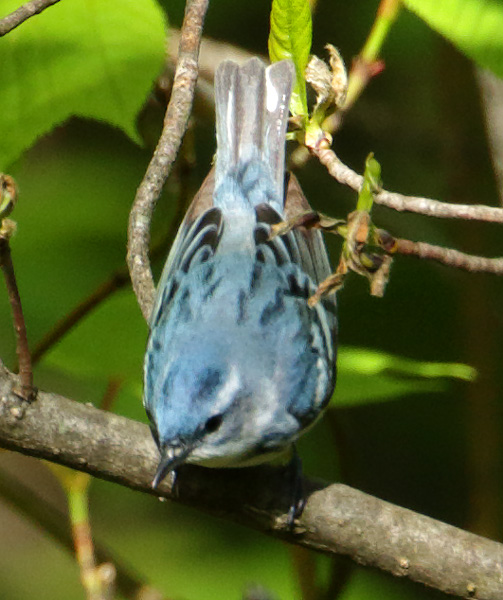
Cerulean Warbler
Then there was avain activity near the ground in front of me. First, I saw a female Indigo Bunting, and then a female Cerulean Warbler foraging witht a first spring male American Redstart.
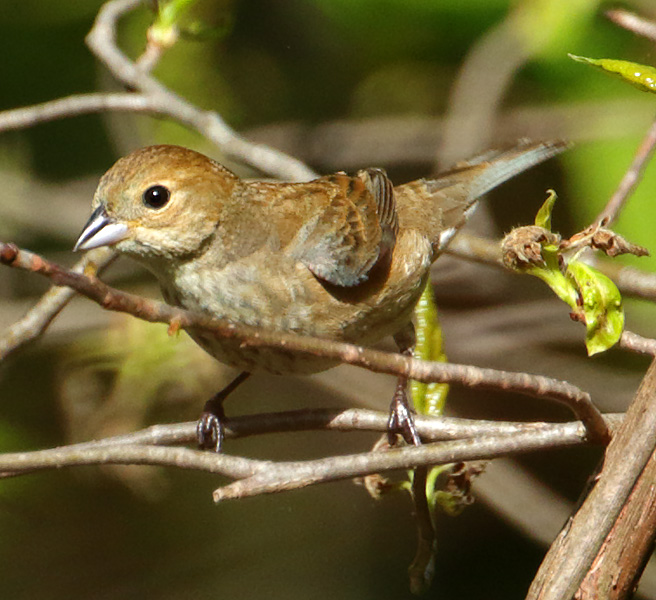
Female Indigo Bunting
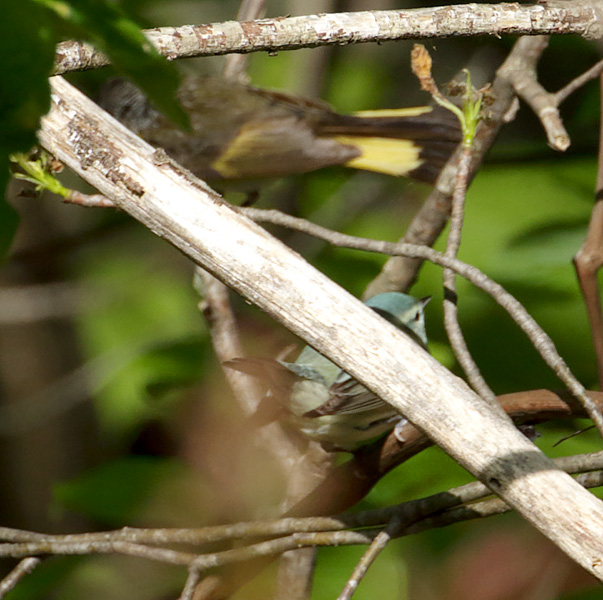
Female Cerulean Warbler and first spring male American Redstart
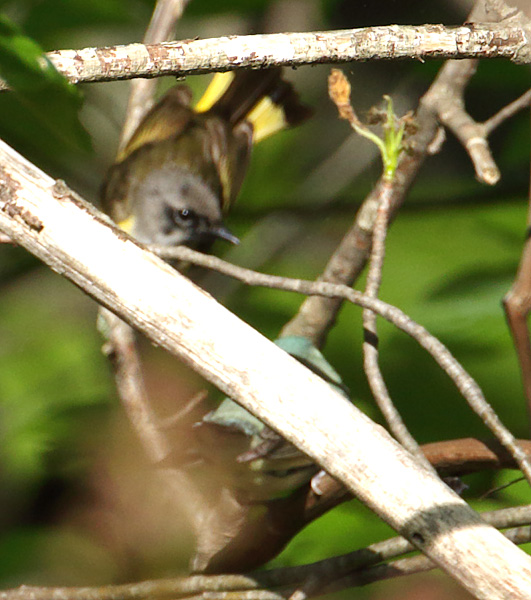
Female Cerulean Warbler and first spring male American Redstart
Then a Black and White Warbler caught my attention.

Black and White Warbler
There was even more avian activity. I've taken hundreds of photos of Cerulean Warblers, but the last time I got a male and a female Cerulean Warbler in the same photo was in May 2009.
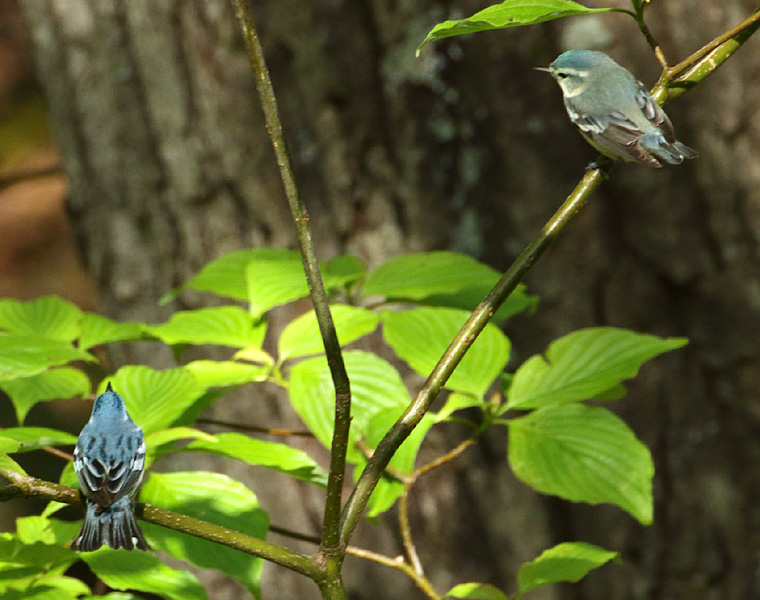
Male and female Cerulean Warblers

Male and female Cerulean Warblers
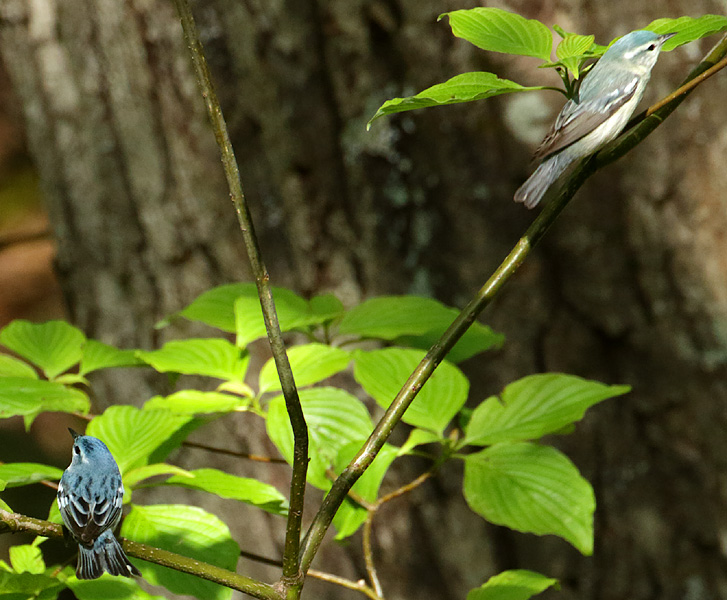
Male and female Cerulean Warblers
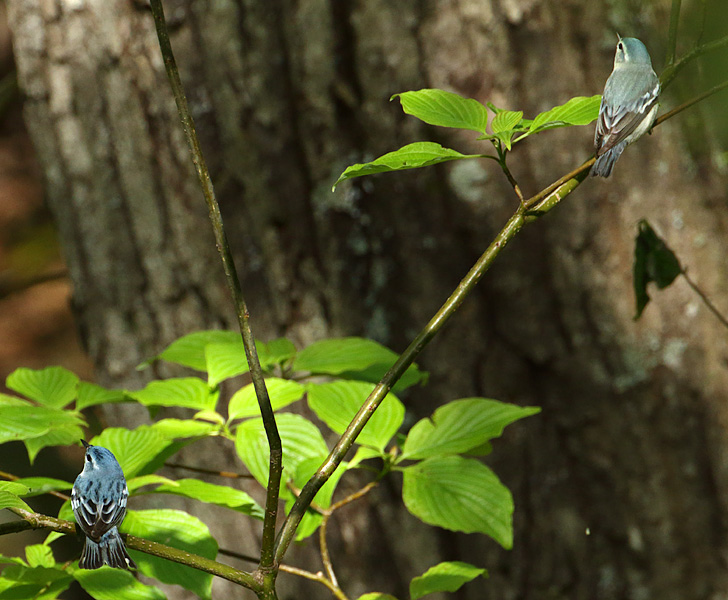
Male and female Cerulean Warblers
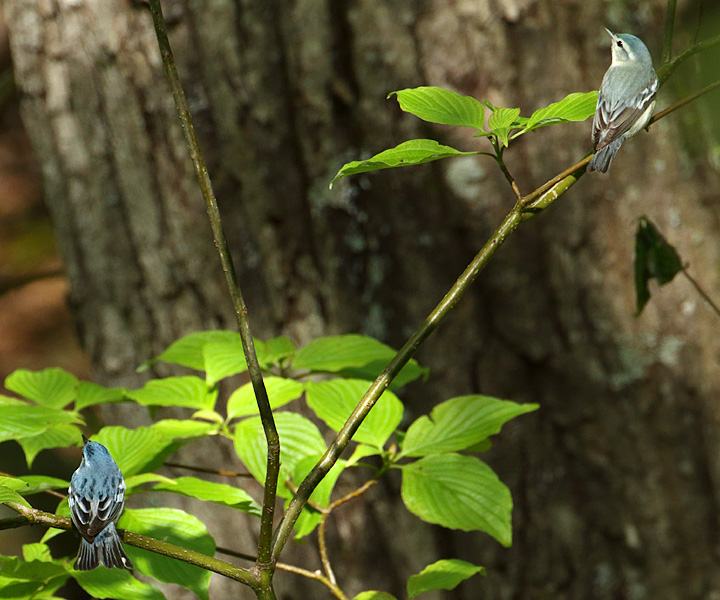
Male and female Cerulean Warblers
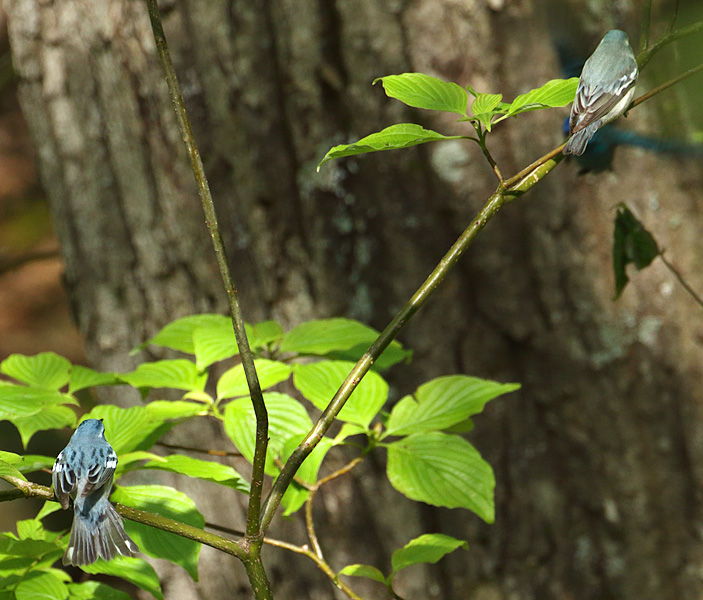
Male and female Cerulean Warblers
My photo shoot got interrupted when a male Indigo Bunting flew in and scared the male Cerulean Warbler away.

Male Indigo Bunting, and male and female Cerulean Warblers
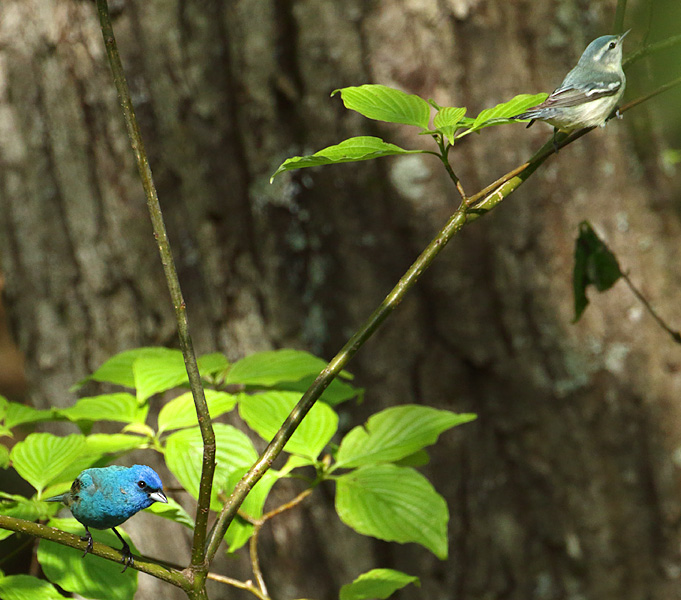
Male Indigo Bunting and female Cerulean Warbler
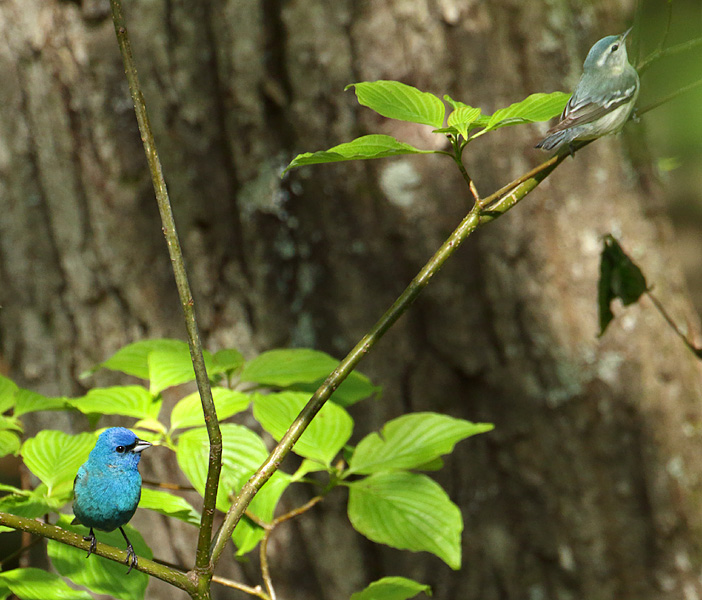
Male Indigo Bunting and female Cerulean Warbler
The male Cerulean Warbler stuck around, but kept its distance from the Indigo Bunting.
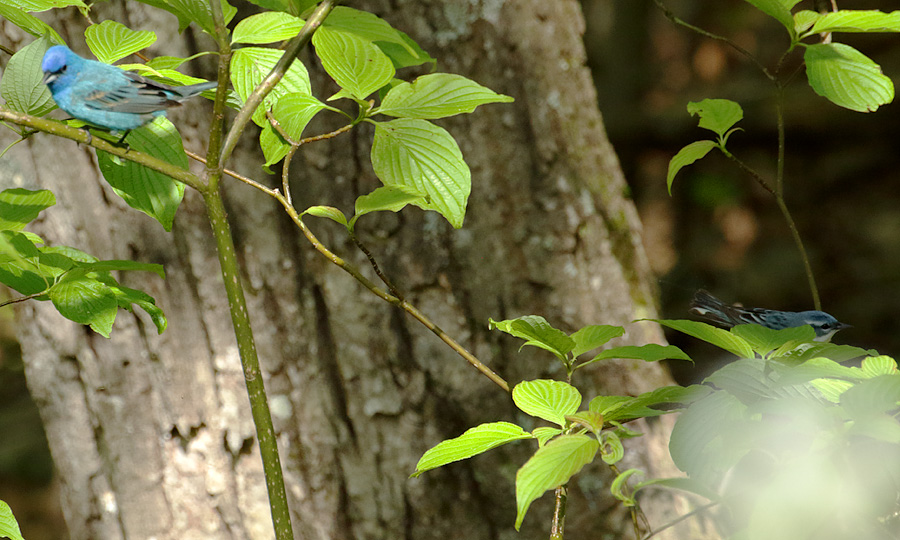
Male Indigo Bunting and male Cerulean Warbler
I then went up to the south end of the cirque where I saw more Cerulean Warblers and American Redstarts, another Black and White Warbler, an Ovenbird, and a female Black-throated Blue Warbler. I also got my second Yellow-throated Vireo of the day, along with several Red-eyed Vireos.
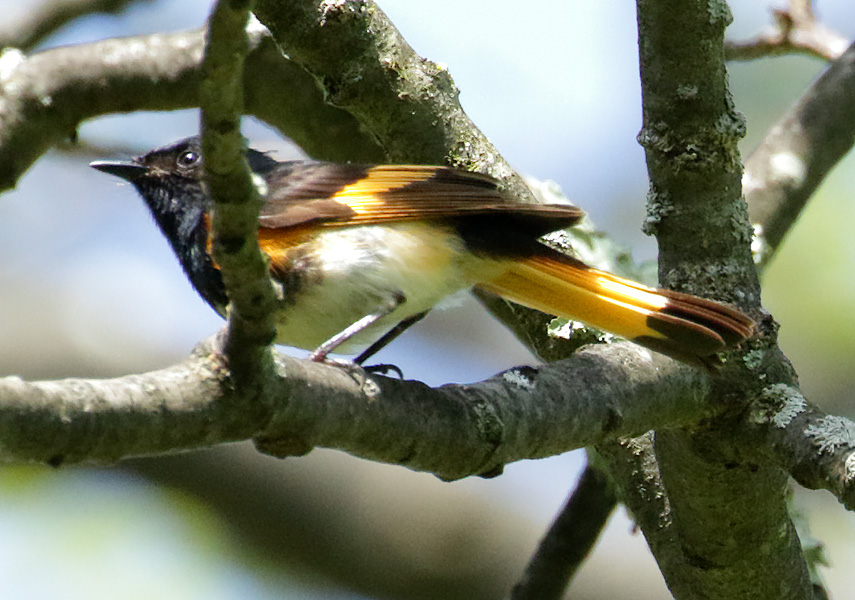
Male American Redstart
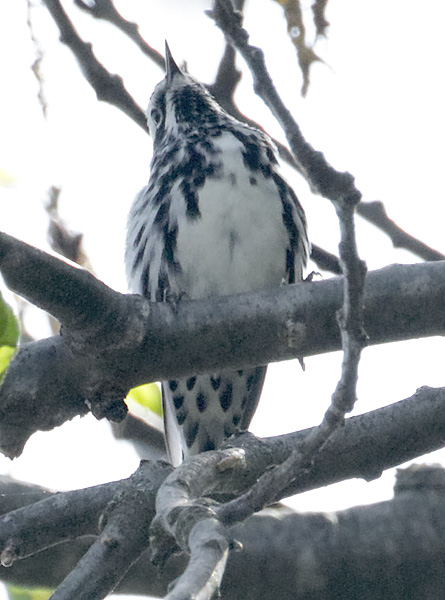
Black and White Warbler

Black and White Warbler
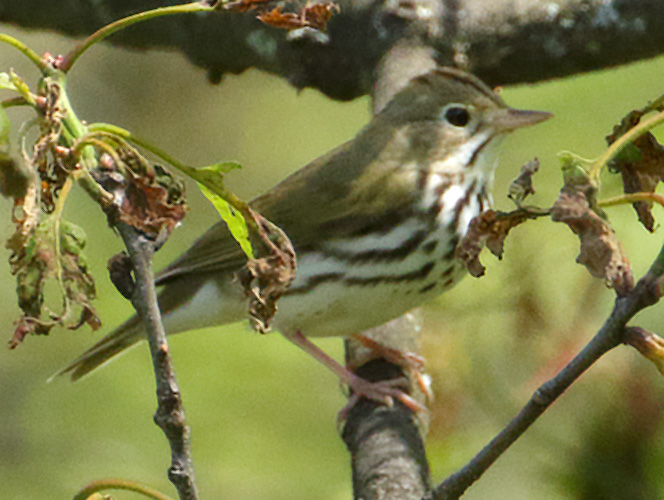
Ovenbird
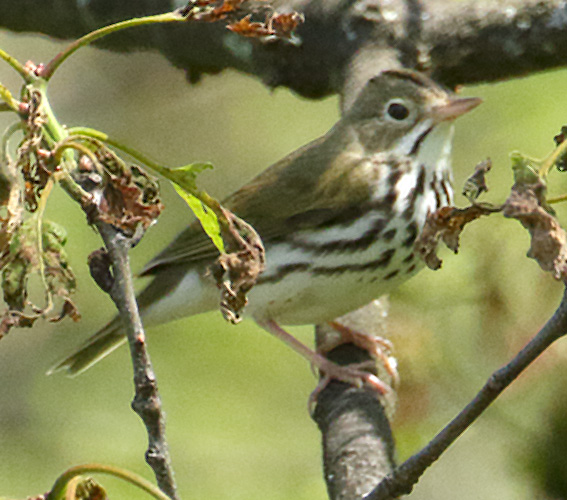
Ovenbird

Female Black-throated Blue Warbler

Yellow-throated Vireo
At Hickory Springs Overlook (mm. 12), I had more Cerulean Warblers, more American Redstarts, saw a Chestnut-sided Warbler, and a Hooded Warbler.
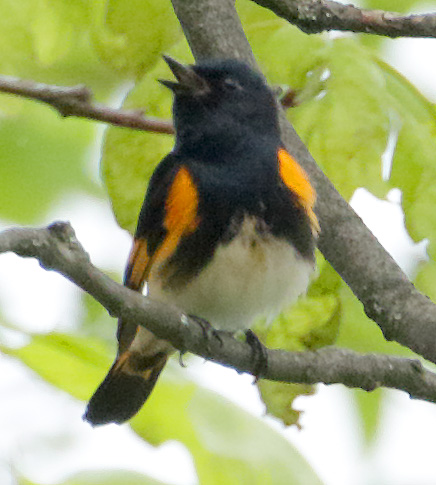
Male American Redstart
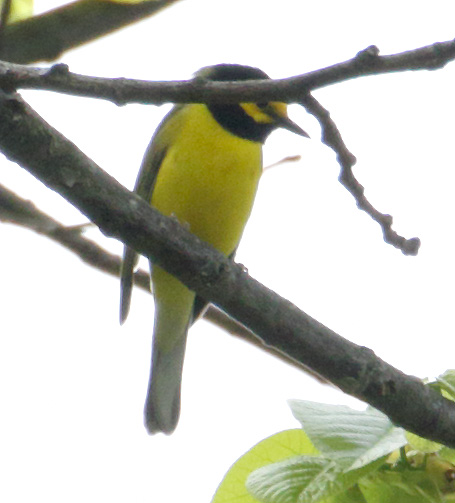
Hooded Warbler
Along Route 610, I heard a Pine Warbler and Worm-eating Warblers where I have been seeing these species during the past few weeks, as well as more American Redstarts, Cerulean Warblers, and Ovenbirds.